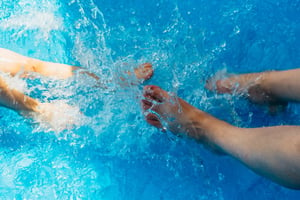Once warm weather finally hits, families and children head to pools and lakes to cool down. Swimming is a standard summer activity but many adults and children aren't strong swimmers. This can lead to terrible drowning tragedies if non-swimmers get into water that’s too deep. While lifeguards are there to protect swimmers in many situations, this isn’t always the case.
Most people associate life jackets with boating activities but they can also help keep non-swimmers safe in a pool environment. In fact, the YMCA of the USA recommends that Ys require non-swimmers to always be within arm’s reach of a supervising adult and also wear a U.S. Coast Guard-approved life jacket. While wearing a life jacket doesn’t eliminate the need for supervision or for learning how to swim, it can be an added layer of protection against drowning.
Providing safe life jackets can also help any adults who aren’t confident swimmers enjoy the pool. Y USA has a few tips for organizations using life jackets in their pools:
- If providing life jackets, implement a maintenance program and regularly inspect the life jackets.
- If allowing swimmers to bring their own life jackets, ensure they are Coast Guard approved.
- Teach aquatic staff how to help swimmers choose the right size life jacket.
- Don’t allow swimmers to jump off a diving board or use water slides while wearing a life jacket.
- Ensure lifeguards are looking for swimmers whose life jackets need to be adjusted.
This article shares valuable information about fitting life jackets and making sure they're maintained properly. Consider providing safe life jackets for swimmers at your organization. It could prevent a serious tragedy.





